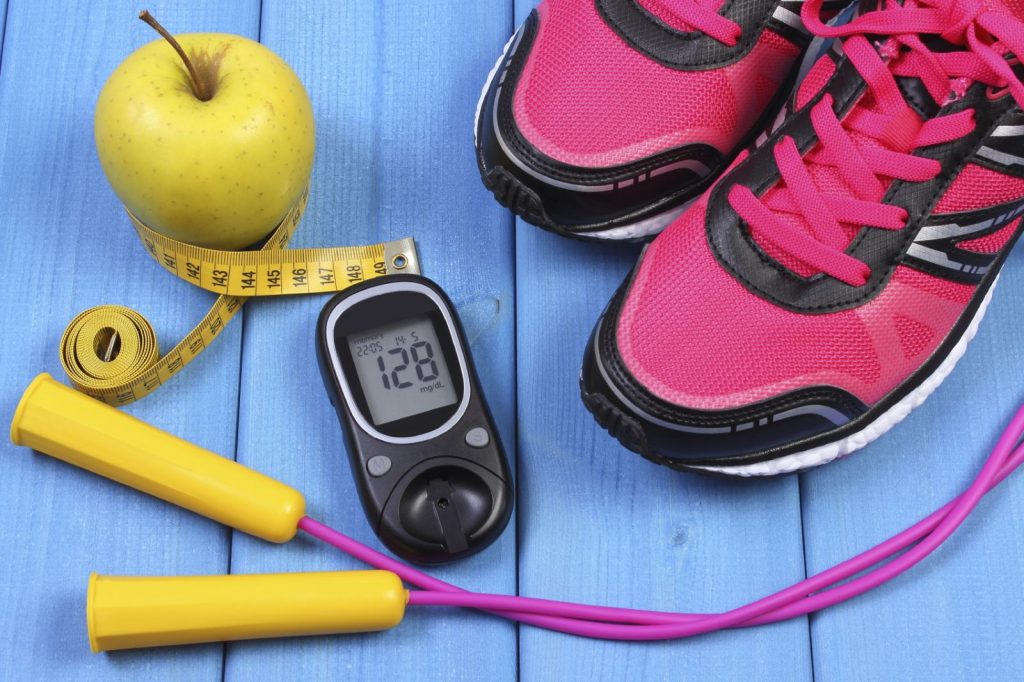Physical activity (or exercise) is any movement, such as walks, dances, etc. You don’t have to go to the gym every day or exercise with special equipment to benefit from physical activity.
Physical activity is as full a component of diabetes mellitus type 2 treatment as nutrition, regular self-control and taking sugar-reducing medicines. Without regular physical activity, you cannot succeed in managing diabetes.
9 benefits that you will get from physical activity
- Improvement of glycemic control. Physical activity increases the sensitivity of tissues to insulin and the active use of glucose in muscles. This leads to lower blood glucose levels.
- Improved blood pressure readings.
- Improvement of the lipid spectrum: reduction of “bad” low-density lipoproteins and triglycerides. These changes reduce the risk of myocardial infarction, stroke, leg amputations.

- Decrease in body weight because physical activity requires energy (“burns” calories) and also prevents weight gain.
- Physical activity can prevent the development of some diseases, in particular, cardiovascular diseases (myocardial infarction and stroke).
- Improving the quality of sleep: you will feel rested with less sleep.
- Improved stress resistance.
- Bones and muscles will become stronger, even if you just walk or work out with light weight.
- You will feel the flexibility and lightness in your body in every movement.
How much do you have to move?
In the largest study of patients with prediabetes, the “diabetes prevention program”, which lasted 4 years, it was shown that physical activity lasting 150 minutes per week (30 minutes 5 times a week) could prevent or delay the development of type 2 diabetes. During the study, patients lost from 4.5 to 9 kg.
Therefore, the standard recommendations for adults (healthy, with pre-diabetes or type 2 diabetes mellitus) are at least 30 minutes of physical activity per day for at least 5 days a week. It can be any physical activity: walking, swimming, cleaning the house, working in the garden. You can start with 5-10 minutes several times a week and gradually move on to longer activities.

How to begin your physical activity:
- Step one. Receiving the approval of a doctor. On the one hand, complications of diabetes or problems with the cardiovascular system may be contraindicated to certain types of physical activity, so you should consult with your doctor. Also, before starting a new regime of physical activity, the doctor must decide whether it is necessary to examine the cardiovascular and respiratory systems. Remember that physical activity can cause hypoglycemia, and at blood glucose levels above 13-14 mmol/l it is simply contraindicated.
- Step two. Choose the most acceptable type of physical activity. Choose what you are interested in, what you have dreamed of doing (dancing, maybe?), what you will really do.
- Step three. Set yourself an achievable goal. For example, start with walks or exercises for 10 minutes 3 times a week and as soon as the goal is reached, increase their duration and then the number of times a week.
- Step Four. You may have an indomitable will and be able to exercise on your own, but if you find it difficult, find some company: it will be more fun to exercise, and you will not be able to “slack off”.
- Step Five. Find the time. If you can’t study 30 minutes at a time, split that time into three ten-minute classes – it’s the same thing!
- Step six. Stay active throughout the day. This will “burn” more calories and reduce glucose levels. As a result, you will be able to reduce weight and improve glycemic control.
All the needed medication you can buy at the Drug Store.

